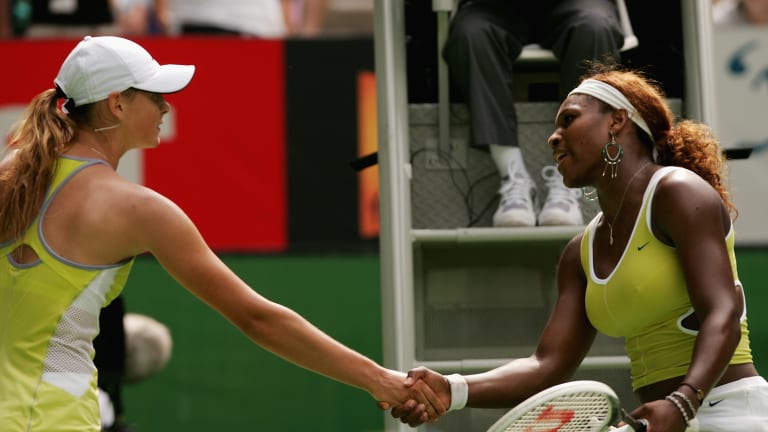To commemorate Serena Williams’ 40th birthday on September 26, we're looking back at four matches that define the power, precision and unshakeable persistence that took her to an Open Era record of 23 Grand Slam titles and 319 weeks atop the WTA rankings.
Next up: her rivalry-defining comeback over Maria Sharapova at the 2005 Australian Open.
THE MOMENT: When discussing the modern women’s game, two rivalries have defined the new millennium; in both, Serena Williams is the common denominator. First, there is Serena and Venus, a duo inexorably linked by blood and what they share in common.
Then there is Serena and Maria—that is, Maria Sharapova. They are, in their own way, bonded: by circumstance, and how they differ.
Serena had already won six major titles by the end of 2003, and enjoyed numerous rivalries early in her career. Her initial opposition were either established veterans like Lindsay Davenport, Monica Seles and Jennifer Capriati, or colleagues of her own up-and-coming cohort like Martina Hingis, Justine Henin and her own sister. Sharapova was the first teen phenom to upset the order established by Serena and Venus at the turn of the century.

